
Newport is a seaside city on Aquidneck Island in Rhode Island, United States. It is located in Narragansett Bay, approximately 33 miles (53 km) southeast of Providence, 20 miles (32 km) south of Fall River, Massachusetts, 74 miles (119 km) south of Boston, and 180 miles (290 km) northeast of New York City. It is known as a New England summer resort and is famous for its historic mansions and its rich sailing history. The city has a population of about 25,000 residents.

Malbone is one of the oldest mansions in Newport, Rhode Island. The original mid-18th century estate was the country residence of Col. Godfrey Malbone of Virginia and Connecticut. The main house burned down during a dinner party in 1766 and the remaining structure sat dormant for many years until New York lawyer Jonathan Prescott Hall built a new roughly 5,800 sq ft (540 m2) castellated residence directly on top of the old ivy-covered ruins.
Ann Smith Franklin was an American colonial newspaper printer and publisher. She inherited the business from her husband, James Franklin, brother of Benjamin Franklin. She published the Newport Mercury, printed an almanac series, and printed Rhode Island paper currency. She was the country’s first female newspaper editor, the first woman to write an almanac, and the first woman inducted into the University of Rhode Island's Journalism Hall of Fame.
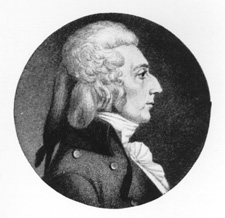
Christopher Grant Champlin was United States Representative, Senator and a slave trader from Rhode Island.
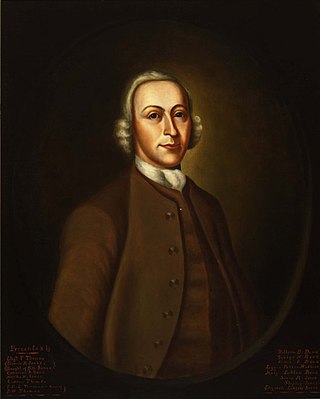
Peter Harrison was a colonial American architect in New England who is credited with bringing the Palladian architectural movement to the colonies.
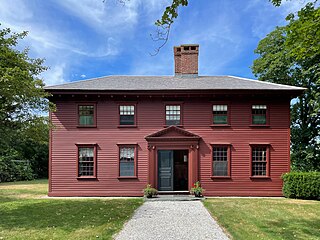
The Whitehall Museum House is the farmhouse modified by Dean George Berkeley, when he lived in the northern section of Newport, Rhode Island that comprises present-day Middletown in 1729–1731, while working to open his planned St Paul's College on Bermuda. It is also known as Berkeley House or Bishop George Berkeley House and was listed on the National Register of Historic Places in 1970.
The Newport Historical Society is a historical society in Newport, Rhode Island that was chartered in 1854 to collect and preserve books, manuscripts, and objects pertaining to Newport's history.

Trinity Church, on Queen Anne Square in Newport, Rhode Island, is a historic parish church in the Episcopal Diocese of Rhode Island. Founded in 1698, it is the oldest Episcopal parish in the state. In the mid 18th century, the church was home to the largest Anglican congregation in New England.
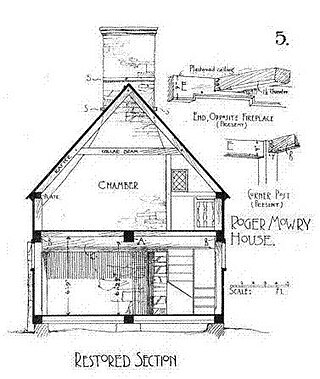
Norman Morrison Isham (1864–1943) was a prominent architectural historian, author, and professor at Brown University and Rhode Island School of Design (RISD). He was an ardent preservationist and a pioneer in the study of early American architecture.

The Old Colony House, also known as Old State House or Newport Colony House, is located at the east end of Washington Square in the city of Newport, Rhode Island, United States. It is a brick Georgian-style building completed in 1741, and was the meeting place for the colonial legislature. From independence in 1776 to the early 20th century, the state legislature alternated its sessions between here and the Rhode Island State House in Providence.
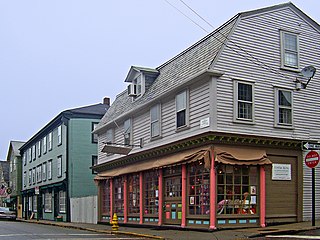
The Newport Historic District is a historic district that covers 250 acres in the center of Newport in the U.S. state of Rhode Island. It was designated a National Historic Landmark (NHL) in 1968 due to its extensive and well-preserved assortment of intact colonial buildings dating from the early and mid-18th century. Six of those buildings are themselves NHLs in their own right, including the city's oldest house and the former meeting place of the colonial and state legislatures. Newer and modern buildings coexist with the historic structures.
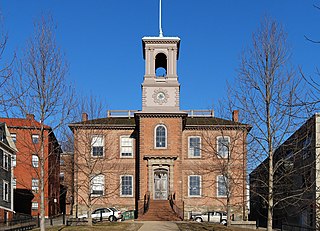
The Old State House on College Hill in Providence, Rhode Island, also known as Providence Sixth District Court House,Providence Colony House, Providence County House, and Rhode Island State House is located on 150 Benefit Street, with the front facade facing North Main Street. It is a brick Georgian-style building largely completed in 1762. It was used as the meeting place for the colonial and state legislatures for 149 years.

William Brenton was a colonial President, Deputy Governor, and Governor of the Colony of Rhode Island and Providence Plantations, and an early settler of Portsmouth and Newport in the Rhode Island colony. Believed to be from Hammersmith, Middlesex, England, he emigrated to the British Colonies in North America by 1633, and rose to minor prominence in the Massachusetts Bay Colony before relocating to a new settlement to the south that became today's Rhode Island.
John Callender Jr. (1706–1748) was an American historian and pastor of First Baptist Church in Newport, Rhode Island. He authored the first historical account of Rhode Island, An Historical Discourse on the Civil and Religious Affairs of the Colony of Rhode-Island, in New England in America. From the First Settlement in 1638, to the end of the First Century.

Washington Square is the geographical and historical heart of Newport Rhode Island. More trapezoid than square, it exists at the intersection of several major streets and what was the colonial long wharf, projecting into the harbor off Aquidneck Island and into Narragansett Bay. Although as a civic space it is colonial in origin, dating back to the first settlement of 1639, much of its present shape, form and name dates from the 19th century while a number of its most prominent buildings are of early 20th century design. Like many civic spaces, it developed over time rather than being imposed by design.
Joseph Brown was an early American industrialist, architect, astronomer, and professor at Brown University.
Timeline of Newport, Rhode Island.

Dudley Newton (1845-1907) was an American architect from Newport, Rhode Island.















